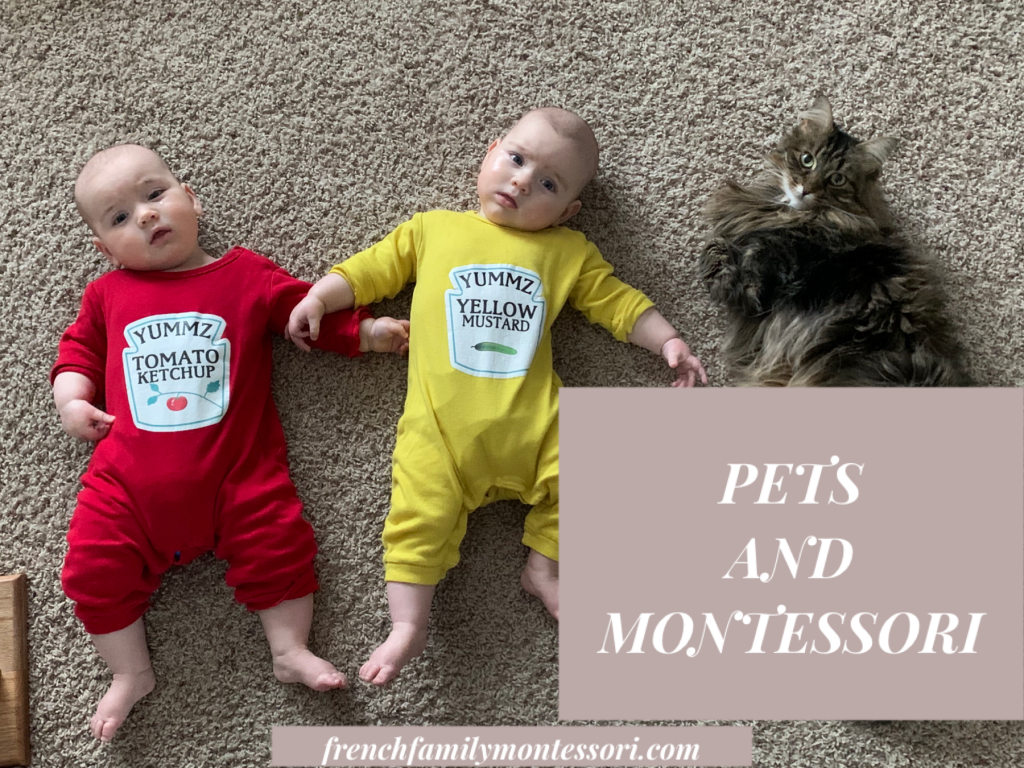
Watering and wiping down plants is one common way a Montessori child learns to care for their prepared environment and another living thing. In time, this can progress to aiding in the care of animals. The child learns great responsibility, compassion, and about life. Unforgettable bonds are often formed between a child and beloved pet, known for helping with self-esteem, anxiety, and creating healthy habits.
When T was younger, I didn’t have indoor plants. So he didn’t start with their care. Instead, he started with assisting in the care of the rescue animals I had; turtles, frogs, birds, and a cat. When T was a little over a year of age, he would help me feed the turtles. He would watch me, and of course, want to do the same. Over time, upon arriving home, he would run up and point at their aquariums and grab their food container–letting me know what time it was. Feeding them was his responsibility, his job, and he took it seriously. He needed a little assistance, opening the food containers and reaching their tanks, but it was something he was clearly proud to partake in.
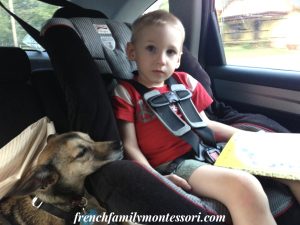
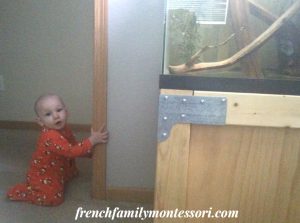
When he was around two and a half, I adopted a dog. He then took on the responsibility of feeding and watering her. He took interest in these tasks and made them a priority. He also wanted the duty of taking her out for potty and walks. Lunah was a small dog, but she was a little stubborn. T was eager to participate, so to involve him, I placed the leash where he was able to access it. Then, it became his job to grab the leash for walks and place it back upon returning. In a short time, during these walks, he showed that he was capable of holding the leash, paying attention, and leading Lunah. He quickly earned the duty to take her out, to the back yard, on a leash to potty (with me supervising from the window, of course).
Our current pet situation is that we have a cat, Nala, and dog, Kaida. Both are great with the girls. That being said, Kaida, while she is coming around, prefers to keep her distance. This works really well as she is skittish and unpredictable when it comes to weather changes and noises. (She was two when we adopted her from the human society and don’t know what she’s experienced prior to us.) Nala has adored being around the girls since day one. When the girls become frustrated, she’s right there offering comfort–and scowling at us. Having watched us, there are some parts of pet care that the girls have started to pick up on and assist in.
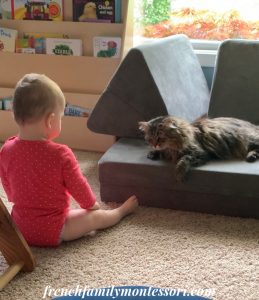
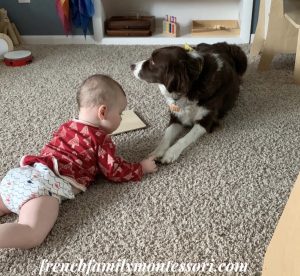
The first one up and changed in the morning will help me let Kaida outside. Then we shut the gate to the stairs. (I want them to be in the habit of knowing it should be shut, just in case it’s ever accidentally left open.) Then, she spends time in her movement area. Once the second child is changed, she and I will let Kaida in, who then usually proceeds to go downstairs. They help shut the gate and give Kaida a treat through the gate slots. By having the girls give Kaida treats, it helps her to see them above her, in the household hierarchy, and they are able to practice their skills. It’s little actions like these that help prepare them for more responsibility.
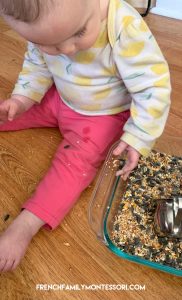

As the girls are becoming more mobile and interested in their beloved pets, they try to interact with them more. Nala does a fantastic job of helping the girls realize if they are being too rough. She will lay her paw on their hand to stop them.
Kaida considers herself to be the girls’ protector and they can do no wrong as far as she is concerned. The girls, especially E, like to put their legs up on things and kick. There are times that this has happened to Kaida. E doesn’t mean harm, but her actions can cause pain. Just as we would with the girls, we tend to the injured party first, this instance being Kaida. We gently show affection and love to Kaida. This gives attention to the one injured and not to the one who caused pain. This also allows E to see appropriate ways to be treating Kaida. Then we explain to her that we must be gentle to her pets.

We recently purchased a bird feeder that attaches to the window, allowing us to see birds (and squirrels, haha) up close. Once the birdseed arrived, I made sure to work on their level, so that the girls may help me scoop and fill the feeder for our feathery outdoor friends. This will allow them to extend kindness to those who don’t live in our household (an early lesson), to observe nature, and practice scooping skills. It will also offer a sensory experience that doesn’t include food (more on that later).
They expressed joy in filling the container with seeds, so now we will offer opportunities to fill Nala and Kaida’s bowls if they would like to assist.
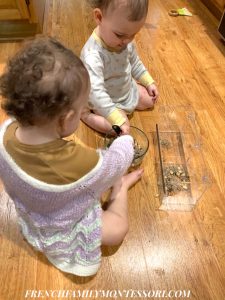
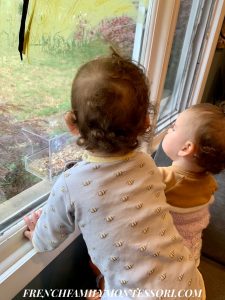
As their skills and abilities to care for their pets evolve, so do their responsibilities.
Does your child enjoy helping care for house plants and their pets?
.
.
.
